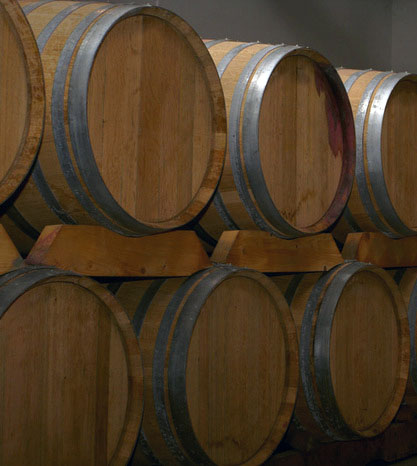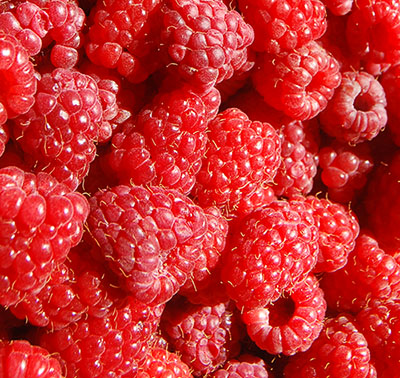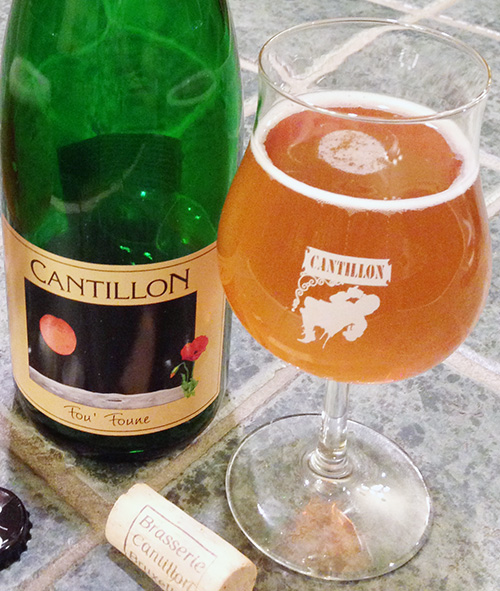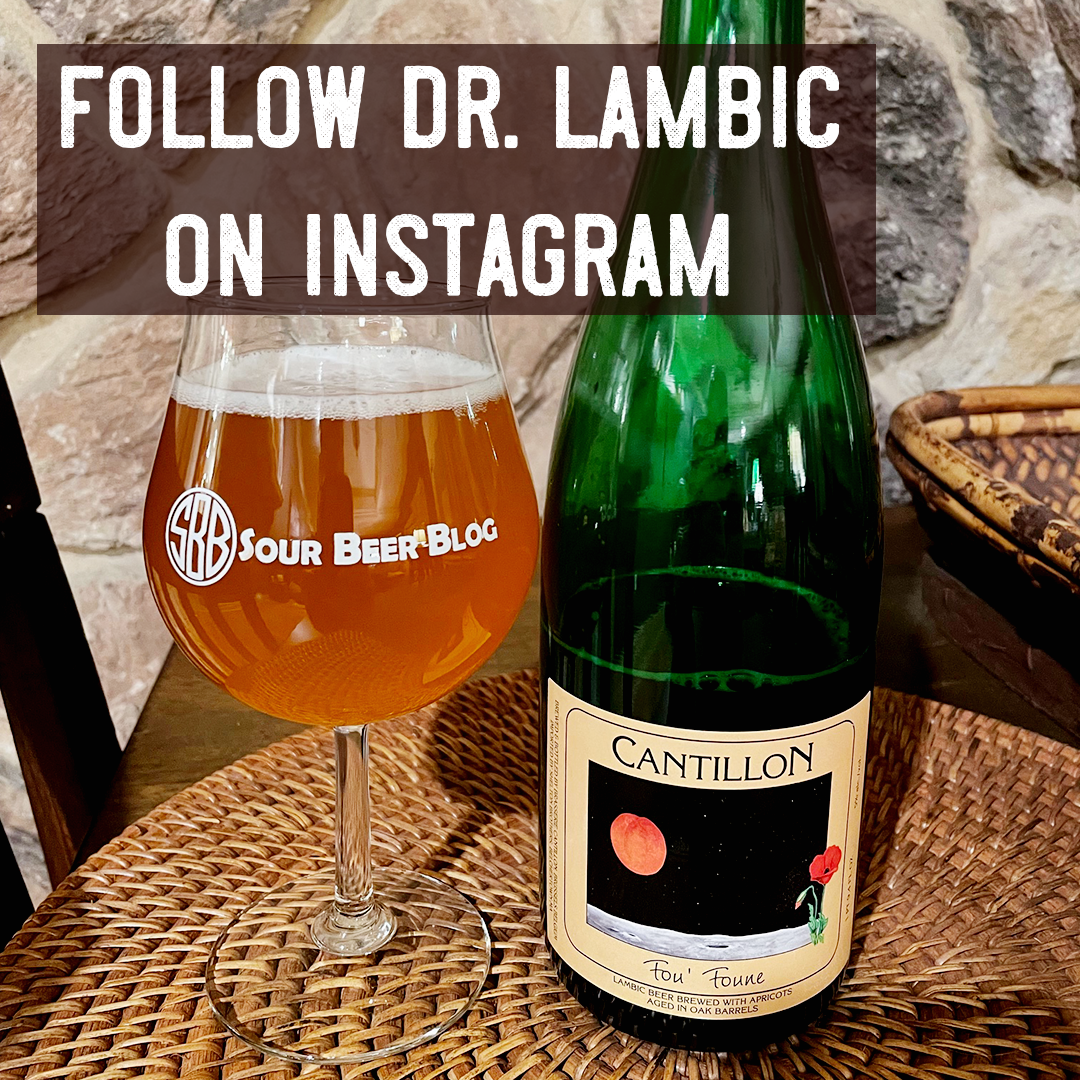Lets talk flavor!
When it comes to tasting and understanding sour beers, I think its very helpful to have a basic understanding of the types of flavors both commonly present as well as the potential off flavors that one might encounter. Naturally, every beer will have its own unique characteristics, but speaking in broad strokes we can group the flavors of sour beers into a few distinct categories.
1. Sour Flavors
One of the first flavors we encounter when tasting a sour beer is the sourness itself. In nature an acid is considered to be any chemical compound that releases single hydrogen protons into solution. This process lowers the pH of the solution. Acids in general provide us with the overall sensation of sourness. However, there are a wide variety of acidic compounds present in natural foods and in beer and these acids will all have subtle or sometimes large differences in flavor.
 For example, most of us have tasted 4 common organic acids, all of which may be present in sour beers. I’ll start with citric acid, which is present in all citrus fruits and in higher concentrations gives lemons and limes their characteristic sour flavor. Another acid common in fruits is malic acid. This is the acid that gives tart cherries and raspberries their sour profile. Citric and malic acid are combined to coat Sour Patch Kids, a popular sour candy in the US. Lactic acid (the predominant acid in sour beers), is produced by a variety of bacterial fermentations, and is the namesake of the large family of beneficial bacteria called Lactobacillus. Lactic acid is the chemical that gives unsweetened Greek yogurt its classic tang as well as provides the souring in sauerkraut. These three acids, citric, malic, and lactic, all have their own unique flavor profile but overall produce a similar effect of tartness on the palate. When we taste these acids we often perceive the sensation of sourness near the center and backs of our tongues. We also can feel a puckering sensation in the inside of the cheeks and in the area where our jawbone connects to our skulls.
For example, most of us have tasted 4 common organic acids, all of which may be present in sour beers. I’ll start with citric acid, which is present in all citrus fruits and in higher concentrations gives lemons and limes their characteristic sour flavor. Another acid common in fruits is malic acid. This is the acid that gives tart cherries and raspberries their sour profile. Citric and malic acid are combined to coat Sour Patch Kids, a popular sour candy in the US. Lactic acid (the predominant acid in sour beers), is produced by a variety of bacterial fermentations, and is the namesake of the large family of beneficial bacteria called Lactobacillus. Lactic acid is the chemical that gives unsweetened Greek yogurt its classic tang as well as provides the souring in sauerkraut. These three acids, citric, malic, and lactic, all have their own unique flavor profile but overall produce a similar effect of tartness on the palate. When we taste these acids we often perceive the sensation of sourness near the center and backs of our tongues. We also can feel a puckering sensation in the inside of the cheeks and in the area where our jawbone connects to our skulls.
These sensations are some of the first ones people will note when tasting a sour beer, and they can sometimes be overwhelming. Whenever I am introducing a friend to sour beers for the first time, I always tell them to take a few sips of the beer before trying to decide if they like it. It takes at least a few sips for most people to get accustomed to the high acidity of these beers before they will begin to taste the complexity and be able to appreciate the malt or fruit components of the recipe.
The fourth organic acid I mentioned is acetic acid, more commonly known as vinegar. Most of us will be familiar with the characteristic flavor and aroma of this acid. In most sour beers any high presence of vinegar is considered an off flavor and I share this view. Acetic acid when present in low levels can add to the complexity of a beer and is generally pleasant. I would consider the highest appropriate level of acetic acid to be when it can be slightly detected, but is still a much weaker flavor than the lactic acid presence. When vinegar is more apparent than the other sour flavors of a beer I feel that this would be a flaw. As an educational side note, I would like to mention that none of the yeast or bacteria present in sour beers can produce acetic acid without the presence of oxygen. So if you are brewing these beers yourself, be very careful with the amount of oxygen your beer is exposed to during fermentation and aging. Another note worth mentioning here is that many brewers and beer fans mix up the words acidic and acetic. Acidic means anything that has a low pH and tastes sour. Acetic means that something contains acetic acid and tastes vinegary.
Many people will claim not to like sour things, but the truth is that they mean they don’t like extreme sourness, which is as much an acquired taste as alcohol, or beer in general. In reality, almost all delicious foods have a combination of two or more broad categories of flavor. Fruits are sweet and sour, meats are sweet, savory, and salty, while traditional beers are sweet and bitter. In traditional beers sweet, grainy, and bread-like flavors of the malt combine with bitter, herbal, piney, or fruity flavors of the hops. Sour beers, like wines, are a balance between sweet and sour. All the malt flavors present in traditional beers can also be present in sour beers while the acidity from bacterial fermentation provides the sour balance in these styles.
 2. The Flavors of Brettanomyces
2. The Flavors of Brettanomyces
There are a few varieties of sour beer that have a simple flavor profile which combines maltiness with lactic acid. Berliner Weiss is an example of a classic style which aside from the tartness of lactic acid, is otherwise “clean” in its profile. However, this is uncommon in sour beers as a category. In most sour beers, the presence of a family of yeast called Brettanomyces produces a wide range of complex flavors in addition to the baseline malty and sour profile of the beer. There are a multitude of different natural strains of this yeast. While many of these strains are yet uncategorized, research into Brettanomyces has suggested that there are many more strains potentially in existence than those of the classic brewers yeast Saccharomyces. The Brettanomyces present in many classic and contemporary examples of sour beer produce flavors ranging from fruity esters which can taste like tropical fruits or pie filling to flavors we associate with other fermentation products like aged “stinky” cheeses. These funky flavors are often described as grassy, earthy, leathery, or as giving the impression of being in a barnyard or horse stable. Brettanomyces can also impart aromas that are more bread-like or dough-like than most of the classic strains of brewer’s yeast.
Many traditional sour beers, such as the lambics of Belgium, pick up Brettanomyces from the air during their cooling process or from the oak barrels in which they ferment and age. In addition to producing the fruity and funky presence in these beers, the Brettanomyces also have the ability to consume more of the long chain sugars present in beer than traditional strains of brewers yeast. This ability to ferment out extra sugars in a beer leaves the product much dryer, and sometimes with less body, than a traditional beer style. A thinner body and very dry finish in a sour beer is a classic characteristic of the presence of Brettanomyces.
3. The Flavors of Wood
 A number of sour beers are fermented or aged in oak barrels. These barrels and the wood aging process add a number of potential flavors to the beers. One flavor that many of us will be familiar with is the bourbon flavor of whiskey. Bourbon flavor is a classic character of spirits and beers that are aged in what is called new oak. The oak barrels that these products are aged in are newly manufactured for the production of such spirits and in the case of whiskey production the inside of the barrel will be flame charred to a certain roast point. This roasting as well as chemicals within the fresh wood in a newly manufactured barrel will produce the classic bourbon flavor. While whiskeys by law can only be produced from new oak barrels, if these barrels are then used to age beer, they will continue to introduce bourbon flavors into the product for several aging cycles. The trend of aging beers in these relatively young bourbon barrels has become very popular in the US for the production of a variety of bourbon-barrel aged stouts and other specialty beers. Despite this the flavors of bourbon are considered uncharacteristic for many styles of sour beer. Many sour beer producers, like vintners who age their wines in oak, are looking for neutral barrels.
A number of sour beers are fermented or aged in oak barrels. These barrels and the wood aging process add a number of potential flavors to the beers. One flavor that many of us will be familiar with is the bourbon flavor of whiskey. Bourbon flavor is a classic character of spirits and beers that are aged in what is called new oak. The oak barrels that these products are aged in are newly manufactured for the production of such spirits and in the case of whiskey production the inside of the barrel will be flame charred to a certain roast point. This roasting as well as chemicals within the fresh wood in a newly manufactured barrel will produce the classic bourbon flavor. While whiskeys by law can only be produced from new oak barrels, if these barrels are then used to age beer, they will continue to introduce bourbon flavors into the product for several aging cycles. The trend of aging beers in these relatively young bourbon barrels has become very popular in the US for the production of a variety of bourbon-barrel aged stouts and other specialty beers. Despite this the flavors of bourbon are considered uncharacteristic for many styles of sour beer. Many sour beer producers, like vintners who age their wines in oak, are looking for neutral barrels.
Once a barrel has seen many generations of aging, the classic bourbon characteristics of the barrel will no longer be present. These neutral barrels do however still contribute a variety of flavors to the finished beer. Two of note are a woody character and a vanilla character. When beer ages in oak it will pick up subtle wood flavors. These flavors are not unlike what one would taste if you took a piece of unfinished furniture oak and tasted it (or more commonly put a wooden cooking spoon in your mouth). The sweet vanilla character that oak can impart on a beer comes from complex sugars within the wood which, in the presence of alcohol, can be converted into a substance called vanillin. This substance is the same chemical produced within the vanilla bean and provides us with the classic vanilla flavor. While strong bourbon flavors are not typical in a sour beer, these woody and vanilla flavors are generally going to be present at some level.
The final flavor category imparted by wood which I would like to discuss is that of micro-oxidation. I mentioned earlier that excess oxygen in an aging beer can be the source of vinegar flavors. However, when only small amounts of oxygen are allowed enter the beer very slowly and over a long period of time, a variety of positive changes in the beer’s flavor can occur. This small and slow ingress of oxygen is exactly what happens through the sides of an oak barrel. This process both helps keep the Brettanomyces living in the beer healthy over a long period of time as well as produces positive changes to the flavors of alcohol and esters produced during the fermentation process, generally making the flavors smoother. Over time small amounts of oxidation will produce characteristic flavors of sherry in the beers, and this too can add complexity and be a positive compliment to the flavor profile of a beer. Several years of aging time in oak is generally the limit for these beers however. After this length of time the oxygen slowly leaking into the beer can overwhelm the Brettanomyces, which will be hibernating by this time, and off-flavors of excess oxidation can build up. These flavors are the ones we typically associate with stale foods and drinks. In beer they often taste papery or like wet cardboard. Keep in mind that three or so years is the limit for barrel aging, unpasteurized sour beers in the bottle can often last many years or even decades and still retain their positive qualities.
4. Fruit or Other Additions
Many Belgian and US craft brewed sour beers will have additions of fruit, vegetables, spices, or other ingredients to add complexity to the finished product. The sky is literally the limit when it comes to the number of potential flavors that can be achieved using different additions to the recipe either during brewing or during aging and blending. I won’t try to delve into all of them now but I will discuss some of the fruits which are commonly added to sour beers. Traditionally, in the lambic beers of Belgium, cherries, raspberries, and grapes, are added to either blended gueuzes or unblended base lambic beer to produce the styles known as kriek, framboise, and druivenlambik. These and any fruit added to a sour beer will impart their own characteristics on the beer. I personally find the best sour fruit beers to be ones where the fruit added is easy to identify by taste, and the unique flavors of the fruit added are clearly present. I also feel that my favorite sour fruit beers have an acidity level on par with the natural acidity present in the fruit. One flavor I will make special mention of here is a distinct almond-like flavor present in kriek (cherry) lambics. Tart cherries are by far the most common fruit added to traditional lambics, and there are many krieks available on the market today. The distinct almond flavor in these beers comes from the pits of the whole cherries added to the aging lambics. This cherry pit flavor is one of my favorite components of a well made kriek.
5. Sweeteners
Some brewers will add sweetness back into their sour and dry beers in order to create more balance and make them appeal to a broader audience. This can be done by either adding artificial sweeneners into the beer, or by killing off the living yeast and bacteria in the beer through pasteurization and then adding sugar back into the product. As a brewer myself, I think that any addition that improves the flavor of your beer is really fine. However, I do personally find that I don’t care for sour beers that have undergone back-sweetening. I think that if brewers are seeking to create beers with more mild sour flavors or increase the background malty sweetness of the beers, both of these can be achieved through the brewing process and these types of process adjustments will produce a better beer at the end than can be created using the addition of sweeteners or sugar.
Ending Thoughts
The variety of unusual flavors present in sour beers can be overwhelming for many drinkers new to the styles. Despite this, I find that the complexity and uniqueness of these flavors is what has drawn me personally to enjoy these beers so much. I would encourage anyone who has tried a sour beer or two and disliked them to hunt down a highly rated example and drink the first few sips slowly, giving your palate a chance to adjust. I find that often all people need to become hooked on these beers is one great example of the style and the patience to get through the first half a glass. You’ll be surprised how many wonderful flavors open up in the beer once you do. Hopefully this primer will help educate those interested in these beers to better identify and appreciate some of what they taste when trying these styles. My goal for this website is to make it an educational and fun community for sour beer fans to learn and share their enjoyment of these unique and awesome beers.
Cheers!
-Matt





